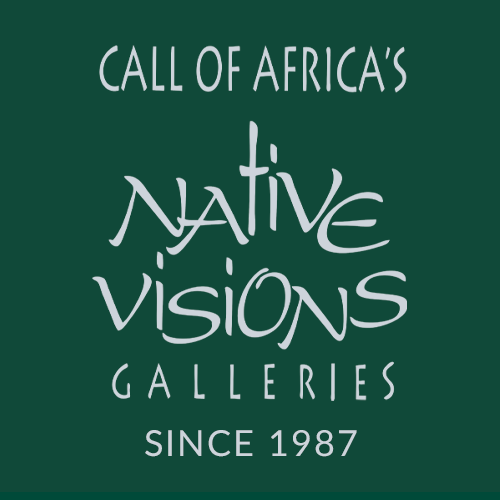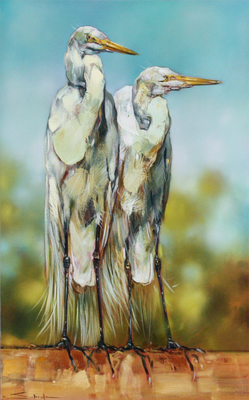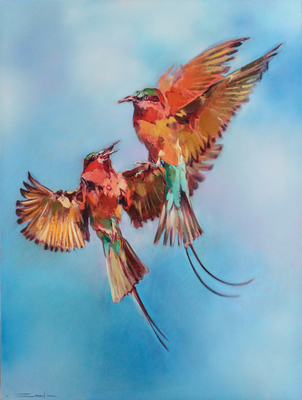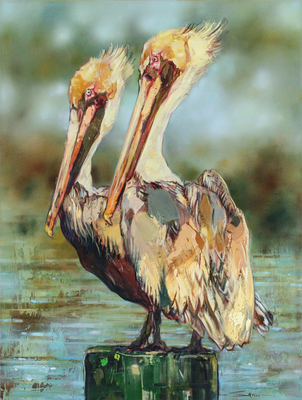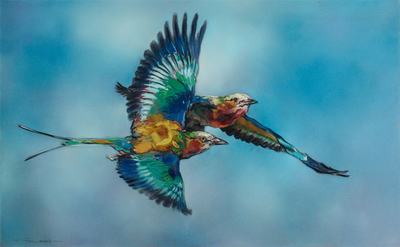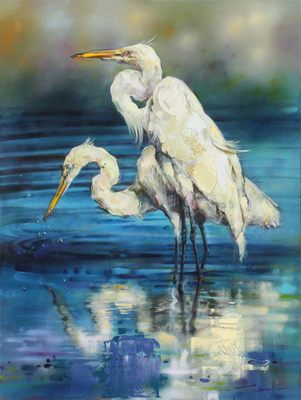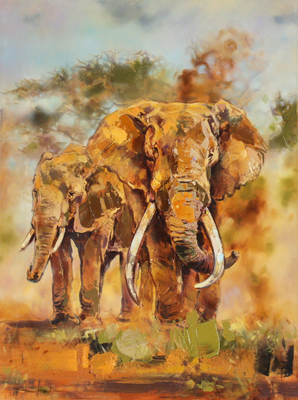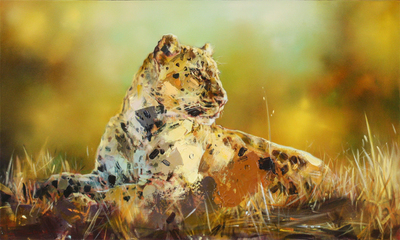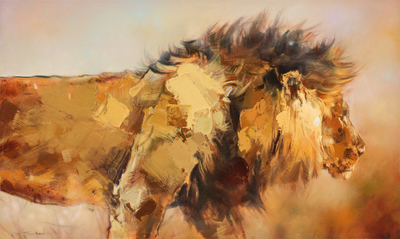James Stroud
There is nothing meek or ambiguous about a charging elephant especially when the tusker in question appears to be lunging off a canvas from South African painter James Stroud. His vivid wildlife portraits are so different from the flat surfaces of most sporting art they could be described as sculptures of paint. A topo map is almost required to navigate through his dense canyons of texture and rivers of color. ...More...
And it is no exaggeration to say that Stroud takes an elbow deep approach to laying down oil. Whether he is pushing paint thickly with a palette knife or using other tools including his hands to achieve distinctive visual effects such as portraying dust on a Cape Buffalo, the spots on a leopard’s coat or the flowing mane of a lion. Stroud has won praise from collectors for making his subjects actually look – and feel – true to life.
“It excites me that someone is able to look at the animal image and be seduced by it, and then be able to look more closely at the paint itself and understand the actual physiology of the illusion,” Stroud says. Still, the dilemma for contemporary nature painters Stroud explains, lies with deciding how to celebrate the environment and iconic African species without falling into the trap of confirming old visual clichés. “I see my work as an attempt to both affirm the natural beauty of the visual world and at the same time to dissect the assumptions that we have about what great art is supposed to be.”
A South African native, he grew up on a timber plantation in eastern Mpumalanga on the wild edge of Kruger Park. On a primal level, he had a front row seat to predators and prey. Mpumalanga was a crossroads for international hunters and photographers. Sketching both people and animals, Stroud went to a rural school where Afrikaans was the first language and English the second. However, the most important aspect of Stroud’s work is the uniqueness and originality of the style and medium. Often referred to as the LeRoy Neiman of wildlife art, he has taken his work further creating sculptural paintings in more true-to-life light and color....Less...
James Stroud
2017
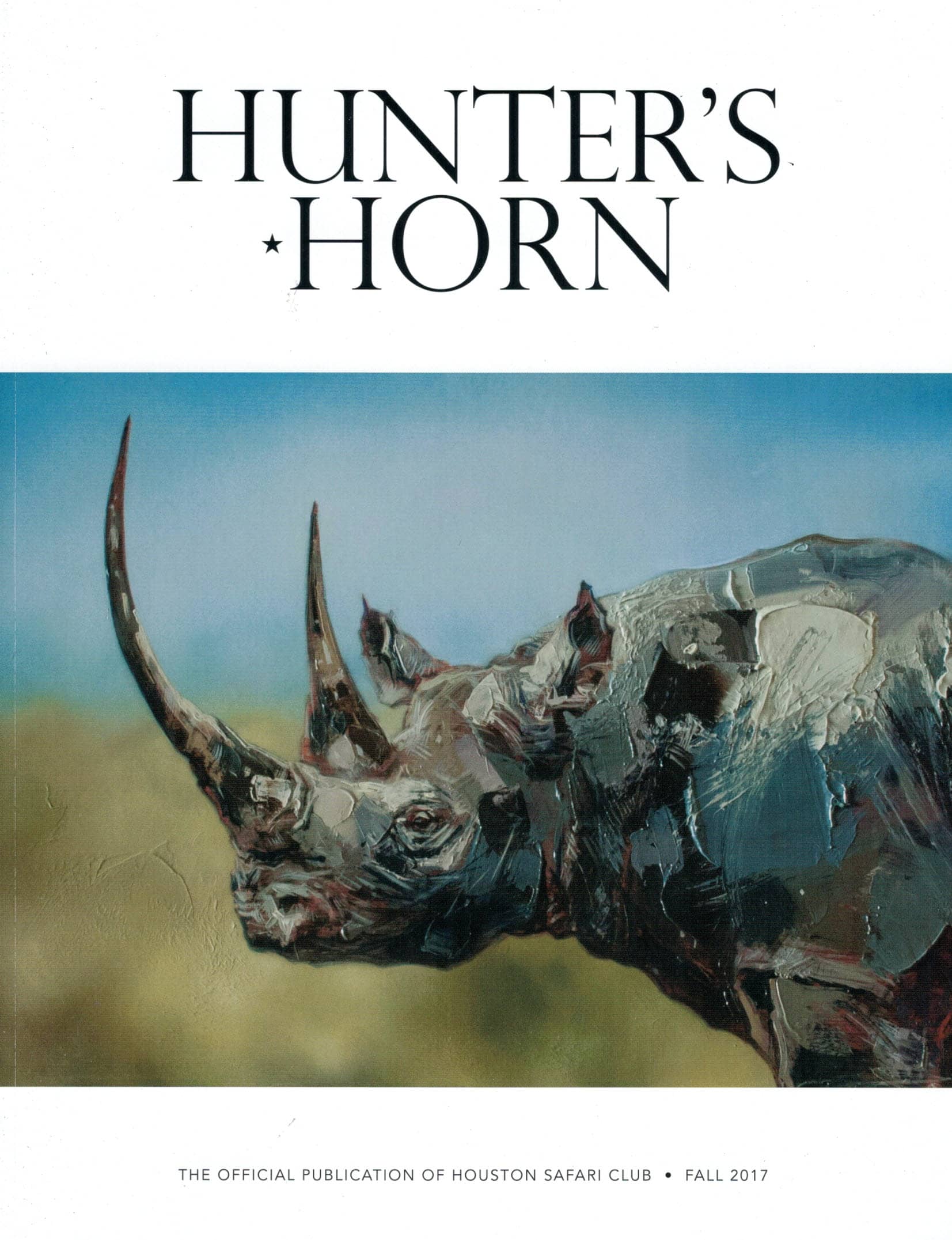
Hunter’s Horn – Fall 2017
October / November 2017
Cover Artist - James Stroud's "The Warrior", 24 x 36, Oil on panel
Read more2015
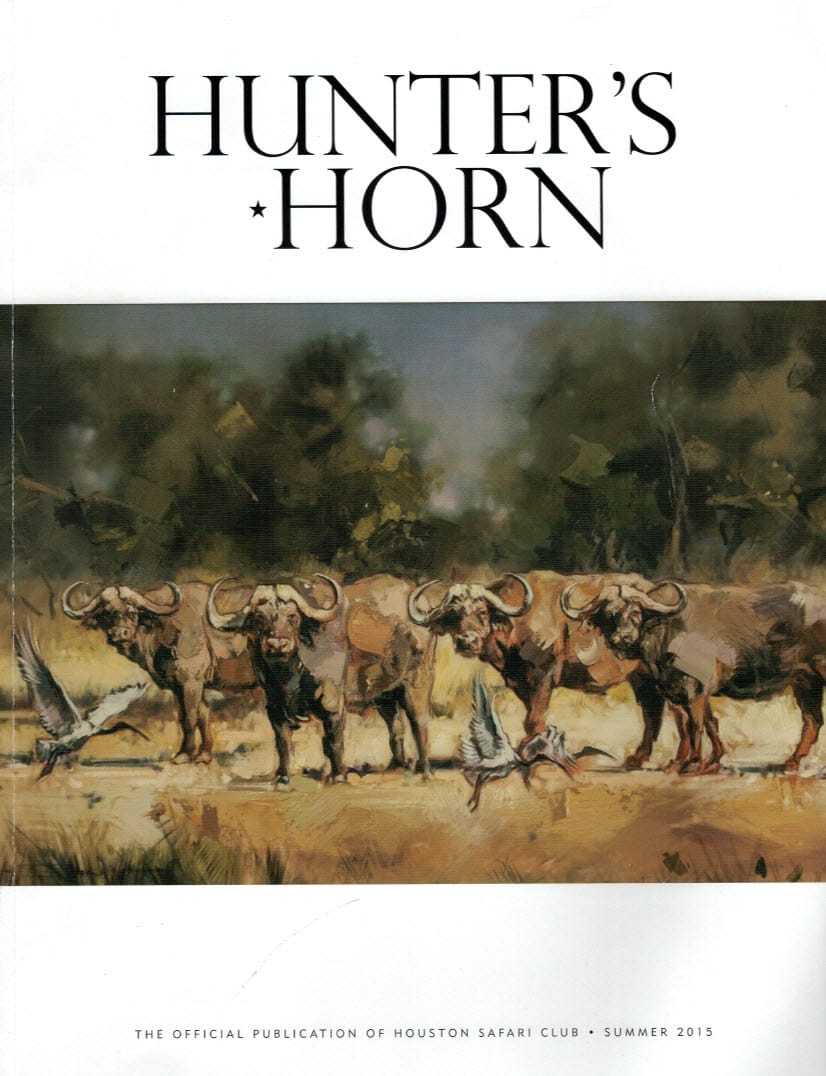
Hunter’s Horn
June / July 2015
Wildlife Impasto - South African animal painter James Stroud wins praise for giving portrayals of iconic species contemporary flair by Todd Wilkinson
Read more2012
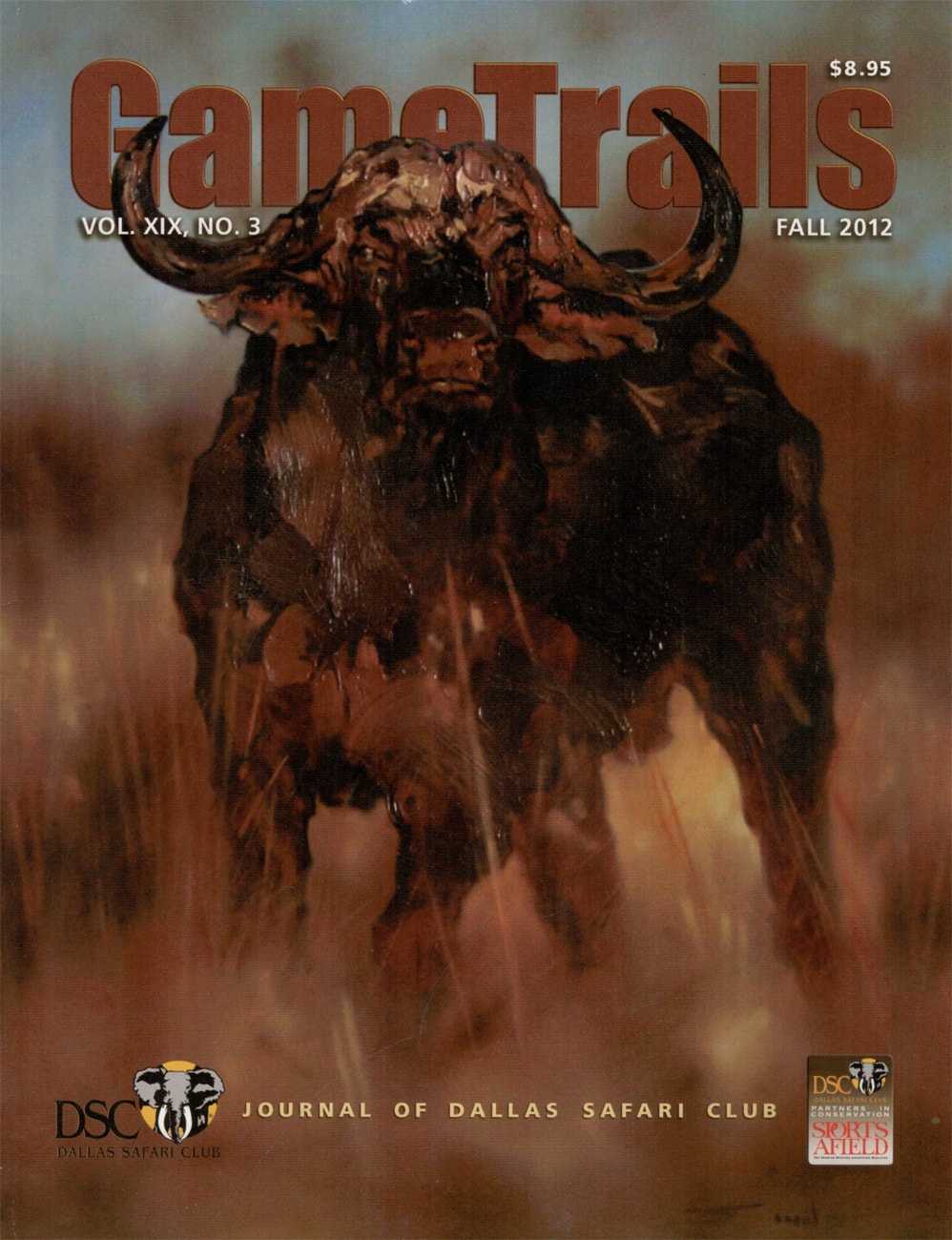
2008
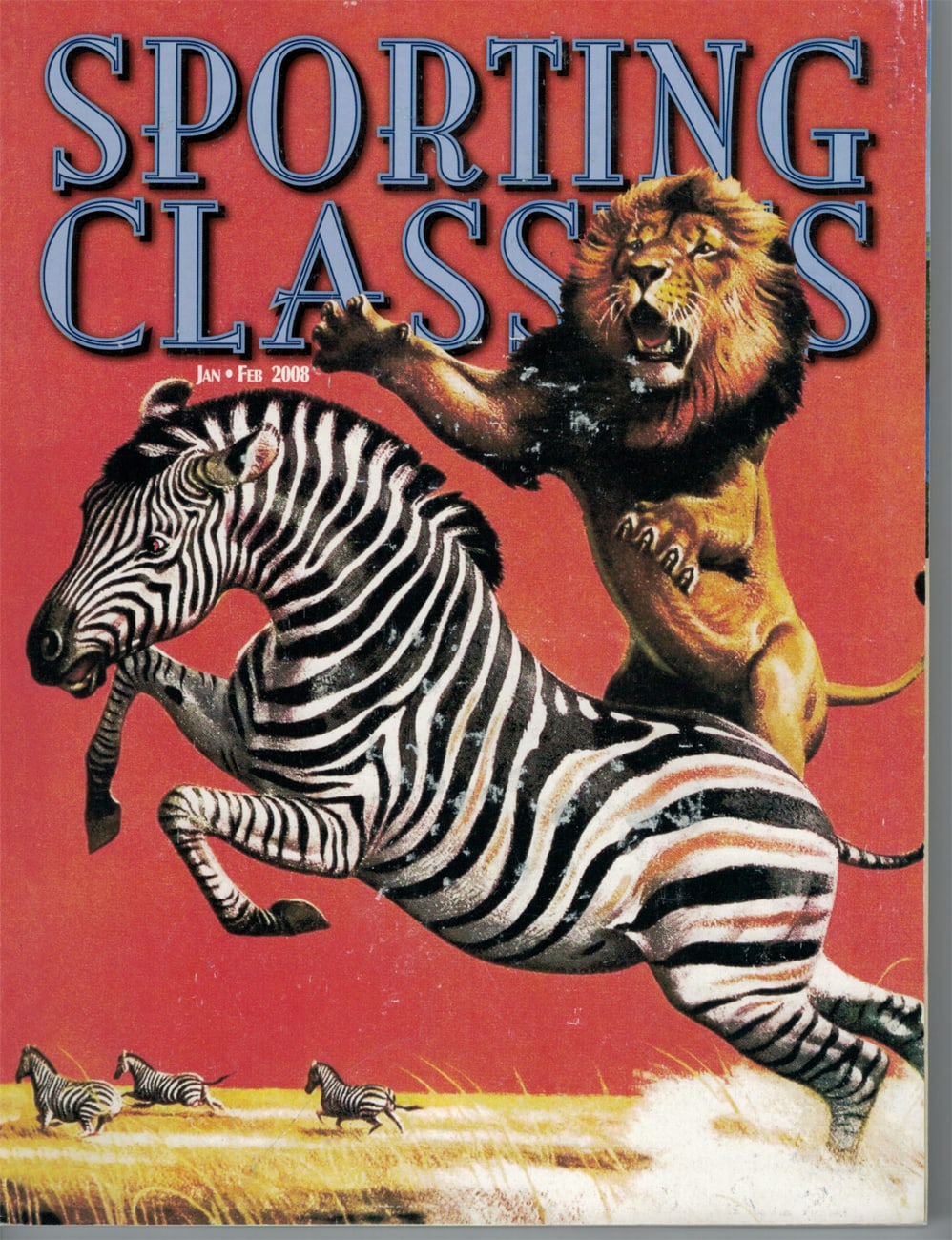
Sporting Classics
January / February 2008
The highly textured paintings of South African artist James Stroud challenge the viewer to recognize and appreciate the spirit of the animal By Todd Wilkinson
Read moreWildlife Art Journal
April 2008
Bushveld Impasto: The Art of James Stroud South African Paints Animals With A contemporary Sculptural Flair: Written by Wildlife Art Journal Staff James Stroud paints black zebra stripes with the same flourish of surface texture Vincent van Gogh brought to his sunflowers. And, in laying down thick-hued splotches of paint with a palette knife, be it to accentuate an elephant's trunk or rhinoceros horn, his technique-which is to say, Stroud's way of seeing and sculpting paint-
Read more